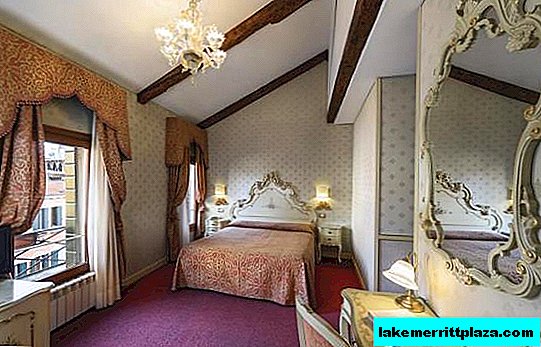The museum, unique to Europe, reflects the Italians' consciousness regarding the consumption of animal and vegetable products.
The only Macri environmental crime museum in Europe (Macri, museo dei crimini ambientali) has opened in Rome on the territory of the Bioparco.
Immediately at the entrance to the museum, visitors will see a giant gaur, a wild bull from India.

He seems to be alive and reflecting on something. The impression is also contributed by a very informative video developed with the assistance of ethnologist Danilo Mainardi. And this is just the beginning of a fascinating walk among the flora and fauna presented on display at an area of 400 square meters.
- Ticket price: adult - 15 euros, children under 12 years old - 12 euros, children up to 1 meter tall - free
- Museum address: Viale del Giardino Zoologico, 20, 00197 - Roma (in the territory of Villa Borghese)
- Official website of the Roman Biopark: www.bioparco.it
To describe the chronicle of the museum, it is enough to give only a few figures. So over the past year, Cites (an organization operating on the basis of an intergovernmental agreement and engaged in the control and protection of flora and fauna) has carried out 67,553 control activities, of which 1,714 in Italian territory and 65,839 in the customs zone.

Director of Cites in Italy, Ciro Lungo, spoke about the organization's activities:
"We went to Sardinia and seized a bear, a tiger and an elephant from the circus; we blocked the illegal trade in rhino horn; finally, we were able to intervene on the issue of genetic crossbreeding of dogs with wolves, because the problem here is not only pollution of the genetic code, but also a potential danger to people that will raise such animals. "
But Cites are not just animals. “By the end of last year, about 1700 Chilean cacti almost reached Italian balconies and gardens. But these cacti of amazing color and shape are on the list of 300 plants protected under the Washington Convention on International Trade in Endangered Species of Wild Fauna and Flora” (to in a word, the list of fauna representatives totals 500 species), ”Lungo added.

The research activities of the organization led to the idea of creating a museum, divided into seven thematic sections: fires, pollution and waste, poaching, illegal deforestation, animal abuse, Cites history and detective technology.

As happens with any museum, the Makri did not fit all 71 thousand material evidence seized by Cites. Otherwise, one should divide the space into halls with cats, monkeys, parrots, rare predators, pythons, turtles, corals ... Therefore, only photographs of Italian illegal products and products of animal and vegetable origin are presented to the public for trial. The turnover of this market, by the way, at the world level is about 260 billion euros per year.








